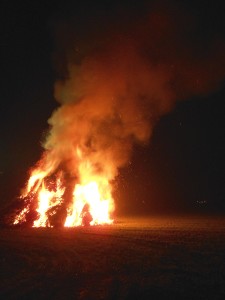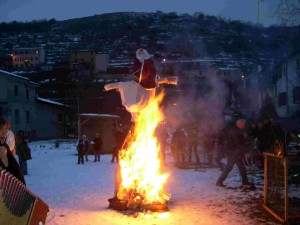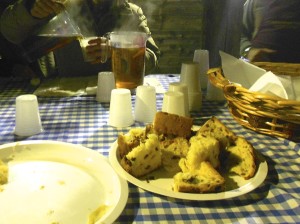
Here in the Veneto, we celebrate the Epiphany with an ages old traditional bonfire called “panevin”. “Pan e vin” is local dialect which means “pane e vino” in Italian, and “bread and wine” in English.
The origins of panevin are rooted in the Christian faith and the belief is that bonfires were made to light the way for the Three Kings while en route to Bethlehem bearing gifts to Baby Jesus. Today, the panevin is made of dry branches, brushwood, firewood plus other things that are no longer needed and piled several meters high.
A puppet called vecia (“old lady”), since it resembles an old lady, is placed on the top of panevin. The folklore is that she is guilty of all the mishaps and calamities which occurred in the past year and thus she is burned. She symbolizes the past and the direction of the smoke indicates whether the new year is going to be good or bad.


Bonfires will be lit generally in the province of Treviso in the evening of January 5th, Epiphany Eve. The panevin tradition is also found in the provinces of Venice, Vicenza, Belluno (where it is called “pavaroi” o “pavarui“) and in the Friuli Venezia Giulia region (where it is called “pignarûi” or “palavins”). In rural areas, the making of panevin is still done by families, but in larger towns, it is often built by local clubs. One of the most famous is in the town of Arcade in Treviso which will celebrate the 45th year of the panevin.
The traditional food we eat is pinza, a local yeast cake made with raisins (pan), and the drink is hot mulled wine (vin) called brulé. In some towns, the mulled wine is made in big pots and handed out during the bonfire and eating pinza is thought to bring good luck for the coming year.
We celebrate and drink until the old lady is ash – Happy New Year!








